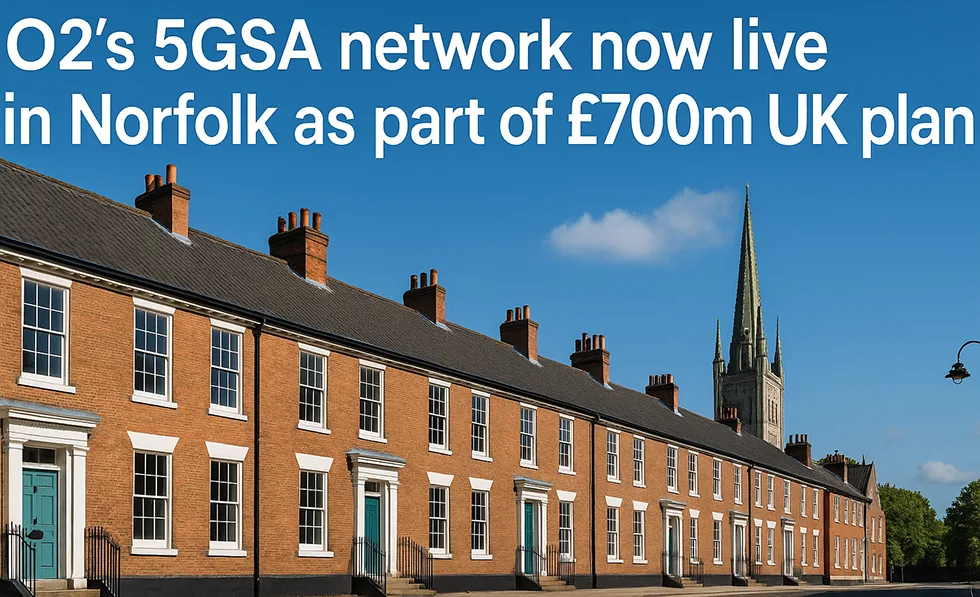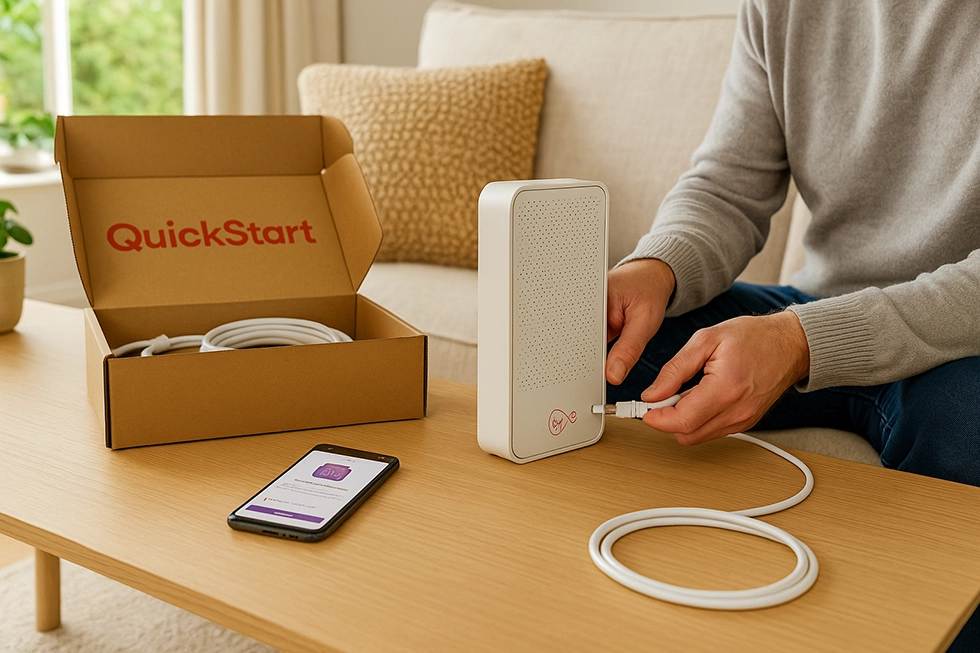Summary
- O2 has activated its 5G Standalone network in Norwich, Great Yarmouth, King’s Lynn and Thetford as part of a £700m UK-wide Mobile Transformation Plan.
- The new 5GSA setup no longer relies on 4G, bringing lower latency, better upload speeds and support for more connected devices and features like network slicing.
- O2 says its 5GSA footprint now covers more than 500 locations and around 70% of the UK population, with a goal of at least 90% outdoor 5GSA coverage in each upgraded area.
- Customers in the upgraded Norfolk towns should see more responsive apps, smoother video calls and more consistent performance at busy times, especially for tethering and uploads.
- To use 5GSA, customers need a compatible 5G phone and current software; access is automatic in live areas and comes at no extra cost, while older devices stay on the existing 5G Non-Standalone network.
O2 has started activating its 5G Standalone network in Norfolk, switching on the next phase of mobile infrastructure across several key towns. The rollout adds Norfolk to O2’s expanding list of upgraded areas, with more than 500 locations now live across the UK.
This forms part of the operator’s wider upgrade programme, which currently covers about 70% of the UK population.

Coverage now live in Norwich, Great Yarmouth and more
The new 5G Standalone network is already live in Norwich, Great Yarmouth, King’s Lynn and Thetford. These are the first areas in the county to be upgraded as part of O2’s Mobile Transformation Plan — a long-term infrastructure investment that aims to deliver at least 90% outdoor 5GSA coverage in each location.
The national rollout began earlier in 2024. O2 says customers with supported handsets can access the new network immediately, with no extra fees or add-ons.
What’s different about Standalone 5G
Unlike older 5G setups that still rely on parts of the 4G network, the new 5GSA system is fully independent. That means the network no longer needs 4G infrastructure in the background to operate, which unlocks better performance across several areas.
With 5GSA, latency is reduced, upload speeds improve, and the network holds up better under pressure. It also allows for more advanced features like network slicing — useful for future services that need dedicated capacity — and better support for large volumes of connected devices.
For everyday users, this means apps respond quicker, video calls run more smoothly, and mobile performance in busy areas should feel more consistent.
How Norfolk benefits from the 5GSA rollout
Norfolk includes a mix of urban centres and rural stretches, which makes consistent mobile performance more challenging. In some areas, mobile data speeds still lag behind national averages, particularly at peak times or on the edges of coverage zones.
O2’s decision to start with the major towns lays the groundwork for wider county-wide expansion. Users in these towns can expect more responsive mobile apps, faster upload performance when tethering or uploading content, and more bandwidth during events or summer peaks in places like Great Yarmouth.
The long-term plan is to futureproof the network as more services rely on 5G as their default connection — especially as data demand continues to grow.
Part of a wider £700 million upgrade project
This rollout is part of O2’s £700 million Mobile Transformation Plan. The operator says its 5GSA network is now the largest in the UK, based on locations covered.
EE is not far behind, currently reaching around two-thirds of the population with its own standalone upgrades. Vodafone and Three are also progressing with their 5GSA rollouts, but both have smaller footprints at the moment.
O2’s approach focuses on broad outdoor coverage in each area it upgrades, rather than selective high-traffic zones. This strategy could pay off as mobile usage spreads beyond city centres.
Steps to start using O2’s upgraded network
To benefit from the upgraded network, customers will need a phone that supports 5G Standalone. Many newer Android devices already do, and some iPhone models may support it too — though this depends on firmware versions and software updates.
Once the device is compatible and you’re in a live area, the switch happens automatically. O2 doesn’t charge extra for access to the new network.
If your phone doesn’t support 5GSA yet, you’ll continue to use the existing 5G Non-Standalone network, which is still available across most areas.
What users in Norfolk can expect
As O2 continues rolling out the upgrade, customers in Norfolk should see a noticeable shift in mobile performance. Interactive apps like games, video chat and collaborative tools should respond faster. Cloud services and streaming apps will feel snappier on mobile data. And in areas where speeds previously dipped during peak times, the new infrastructure should offer more headroom.
Over time, this also creates space for new services that rely on consistent mobile latency — such as real-time navigation, connected vehicles or next-generation IoT tools.
How to confirm 5GSA coverage in Norfolk
If you live in one of the upgraded towns, start by confirming your phone supports 5G Standalone. You may need a software update, even if the hardware is compatible. O2’s coverage map can show you whether your area is now live.
If you’re currently with another network, it might be worth checking whether they’ve started their own 5GSA rollout in your area — or if O2 now offers better coverage locally.
The network is expected to expand across more of Norfolk in 2025, so if your location isn’t covered yet, it may not be far off.
